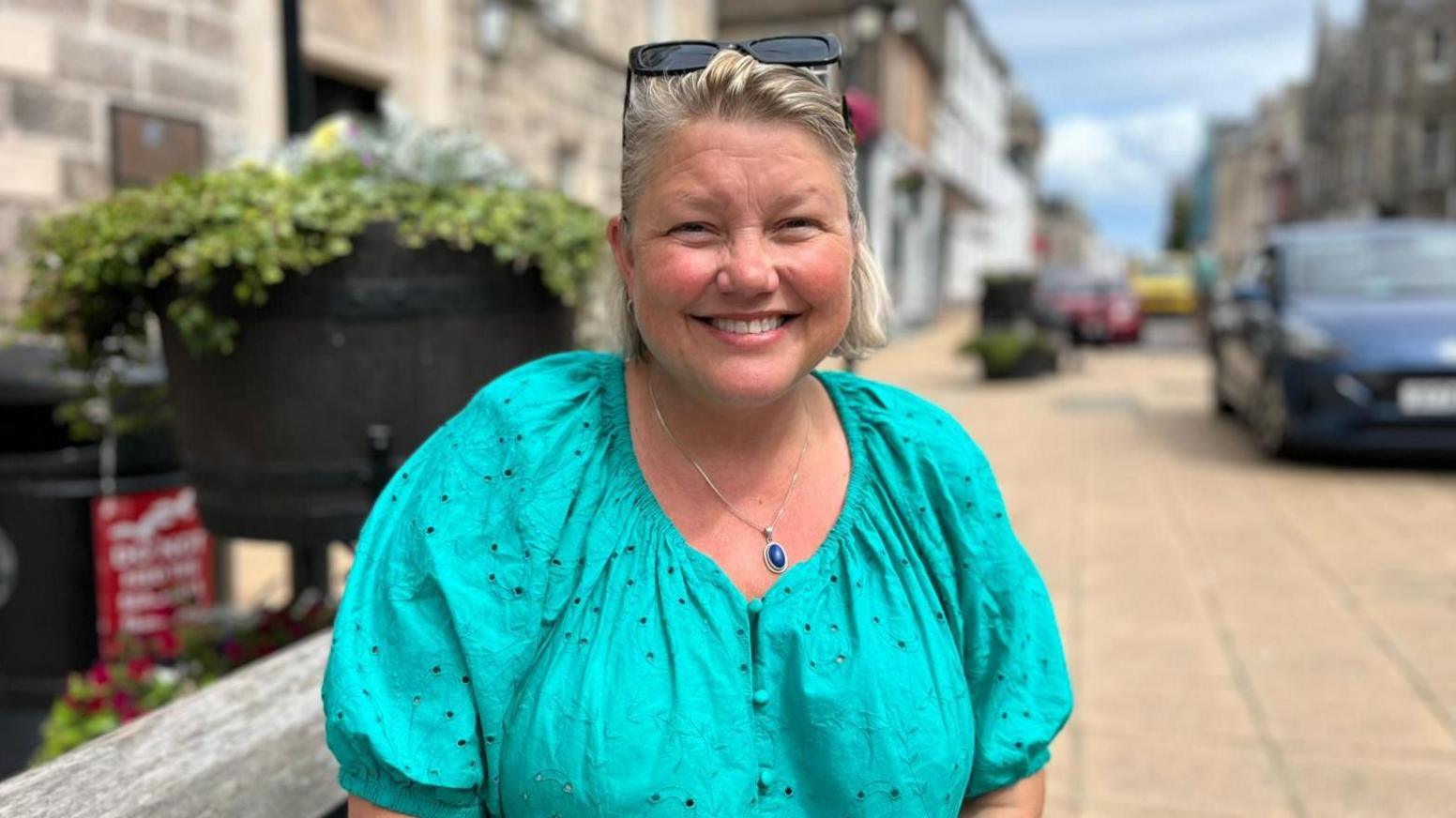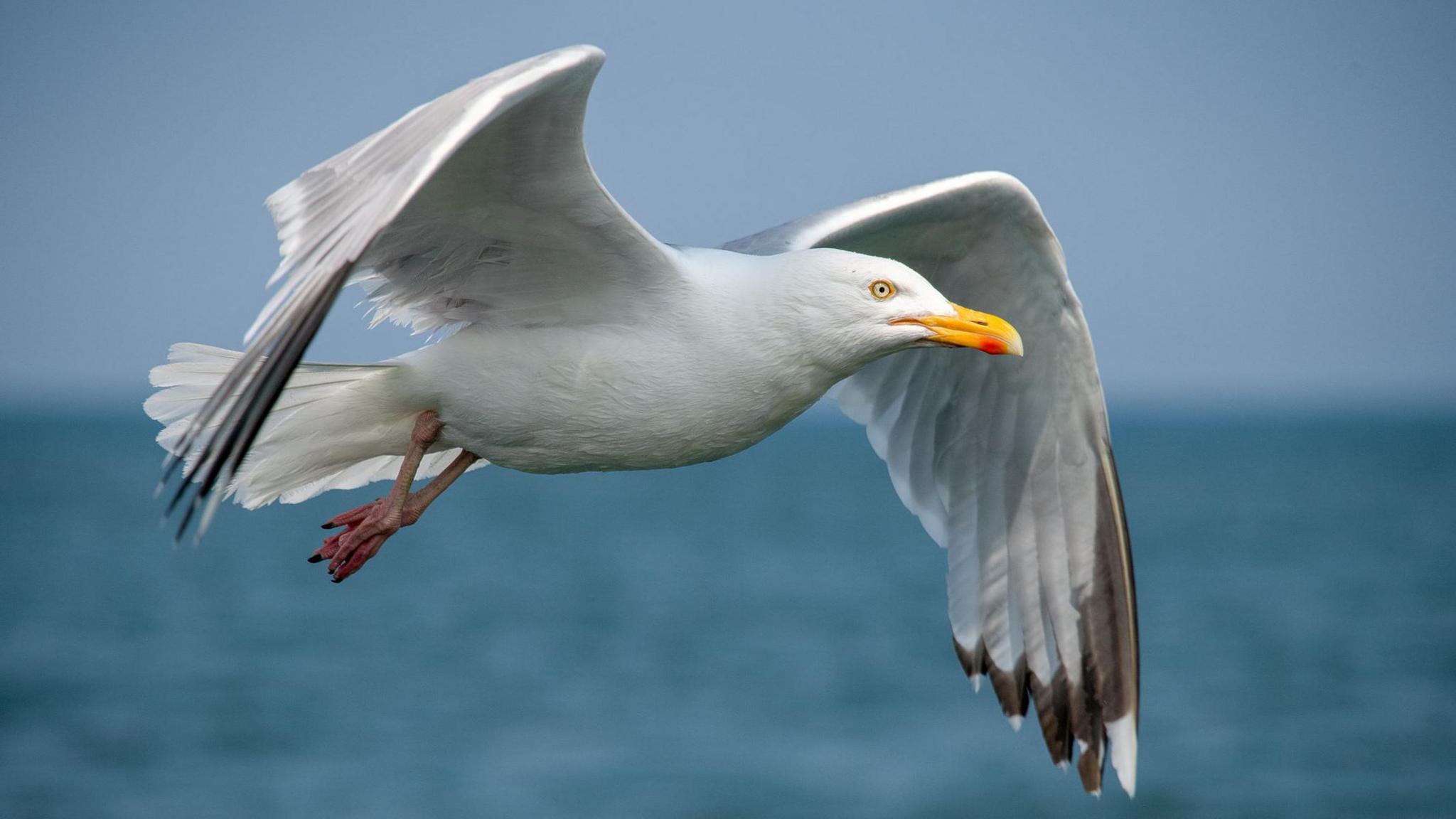How the people of Nairn cope with hungry urban gulls

Conservationists say Scotland's gulls are in decline
- Published
Like other Scottish seaside communities, Nairn is no stranger to gulls.
But residents and businesses in the former fishing port on the Moray Firth coast believe they have become a serious problem.
"I know they are part of living beside the sea, and I accept that, but they are quite a danger," says Caroline Mackay, who has lived in Nairn for almost 50 years.
She said her family had a nasty encounter with a gull in the town.

Caroline Mackay, who has lived in Nairn for almost 50 years, believes gulls were not a problem in the past
Ms Mackay said: "My youngest granddaughter came out of the local bakers with a cake.
"But it wasn't much of a treat because as she was coming out the door down came a sea gull and it landed on her head and scratched her.
"All it was wanting was the food - it was quite vicious."
She added: "I don't remember it being this bad. It feels like it has escalated."
A survey by Nairn Business Improvement District (Bid) last year received 85 reports of gull attacks.
Manager Lucy Harding said: "That was quite worrying.
"It is an issue I regularly get reports on, of people being attacked for food particularly."

Nairn Bid manager Lucy Harding said efforts were being made to discourage gulls from nesting in the town
Ms Harding believes control measures taken over the past few years have made a difference, but she said the process involved was onerous and complicated.
Gulls, like other birds, are protected by law and Scotland's nature body, NatureScot, has strict rules around how they are controlled.
A licence is needed for the removal of nests and eggs from the roofs of buildings in areas where gulls are deemed to be a nuisance.
Gulls can also be a problem in Aberdeen - this one was filmed stealing crisps from a shop in 2016
But Ms Harding said it was now harder to obtain the necessary paperwork.
She said: "In 2023, we had lots of licences and we carried the work out as normal as we had done for five years.
"But last year we were granted a licence far too late."
She said local MSPs Fergus Ewing and Douglas Ross helped Nairn Bid secure a licence in time this year.
In a debate on the issue at Holyrood on Thursday, Ross warned that Scots risk losing their lives over the "growing problem" of "nuisance" gulls.
And fellow Tory Rachael Hamilton said a nationwide summit must be held to tackle the issue as she warned that Scots were being lefts "scared, attacked and traumatised".
She said "aggressive" gulls had attacked seven children in one month last year in Eyemouth, Scottish Borders, with one girl "left with gashes to her scalp and blood running down her face".
When do gulls become a problem?
- Published23 September
New survey will count urban gulls in Inverness
- Published9 May
Nairn Bid has put in place other measures to discourage gulls from nesting in the town.
They include reflective devices designed to scare birds away from rooftops.
Ms Harding said: "I have been sent pictures of gulls sitting next to them, and even mating on top of them, but I think they are working."
Phil Stuart, who runs local shop Vitamin Sea, said he believed Nairn was not "plagued" by gulls like some other seaside communities were.
"I think we are doing really well compared to elsewhere," he said.
"At the moment there are one or two individual birds causing trouble."

Phil Stuart believes control measures have been effective
Five species of gull breed in Scotland - great black-backed, lesser black-backed, herring, common, and black-headed - according to NatureScot.
There are other species found in Scotland, but they are more rare.
Gulls are a coastal species, but they have been drawn into towns and cities due to the plentiful places to build nests, a lack of predators - and lots of opportunities to find food.
In their natural habitats - the coast and farmland - the birds eat carrion, seeds, fruits, young birds, eggs, small mammals, insects and fish.
NatureScot issued 2,633 nest removal licences across Scotland in 2023, and 1,601 in 2024.
It said it understood gulls could sometimes cause problems in towns and cities, but at the same time populations of the birds were facing "serious declines".
A spokesperson said: "Over the last five years we have supported many individuals, businesses and communities to better manage gulls without the need to kill the birds or destroy their nests.
"As a result, the number of licence applications to destroy nests and eggs and kill chicks has reduced."
NatureScot said it would continue to issue licenses where gulls were causing a health and safety issue.
The spokesperson added: "In the longer-term, we need to find ways to live with gulls and other wildlife."

RSPB Scotland said people and gulls could coexist if the right action was taken
Numbers of herring gulls, a species people are most likely to encounter in urban areas, have fallen by 48% in Scotland since the 1980s, according to RSPB Scotland.
A spokesperson said: "Gulls have adapted to live in our urban areas because they are struggling to find food and shelter in the wild.
"Killing gulls is not the answer."
They added: "This is a charismatic species that has always been a part of our coastal communities, their cry is the sound of the seaside.
"People and gulls can coexist so long as we take the right action."